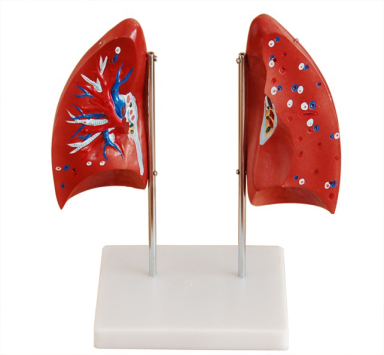In the face of lung diseases, the lung anatomical model has undoubtedly become an effective assistant for accurately locating the disease and formulating treatment plans. In the vast field of medicine, as the core of human respiratory system, the health of lung is directly related to the quality of life and survival state of individuals. However, there are many kinds of lung diseases with complicated and changeable symptoms, which bring great challenges to clinical diagnosis and treatment.
Through the fine anatomical model of the lung, the doctor can intuitively observe the various components of the lung, including the detailed distribution and interrelationship of the lung lobes, lung segments, bronchial trees and other structures. This intuitiveness not only helps doctors better understand the normal anatomy of the lungs, but also enables them to quickly and accurately locate the lesions in the face of lung disease.

In the diagnosis process, doctors can use this model, combined with the patient's clinical manifestations, imaging results and other information, to conduct a comprehensive analysis of the condition. With the help of the model, doctors can more clearly see the specific location, size, shape of the lesions in the lungs and the relationship with the surrounding tissues, so as to provide a strong basis for the formulation of subsequent treatment plans.
In addition, it plays an important role in surgical planning and simulation. For lung diseases requiring surgical treatment, doctors can use the model to simulate operations before surgery, assess the surgical risk, determine the surgical path and the scope of resection. This simulated operation can not only help doctors improve the success rate of surgery and reduce the occurrence of complications, but also relieve the tension of patients to a certain extent and improve the compliance of surgery
In short, in the face of lung diseases, the lung anatomical model with its unique advantages has become an important tool for doctors to accurately locate the disease and formulate treatment plans. It is not only a helpful assistant in medical education, but also an indispensable and valuable resource in clinical practice. In the future development of medicine, we have reason to believe that the lung anatomy model will continue to play an important role, contributing more wisdom and strength to the cause of human health.
